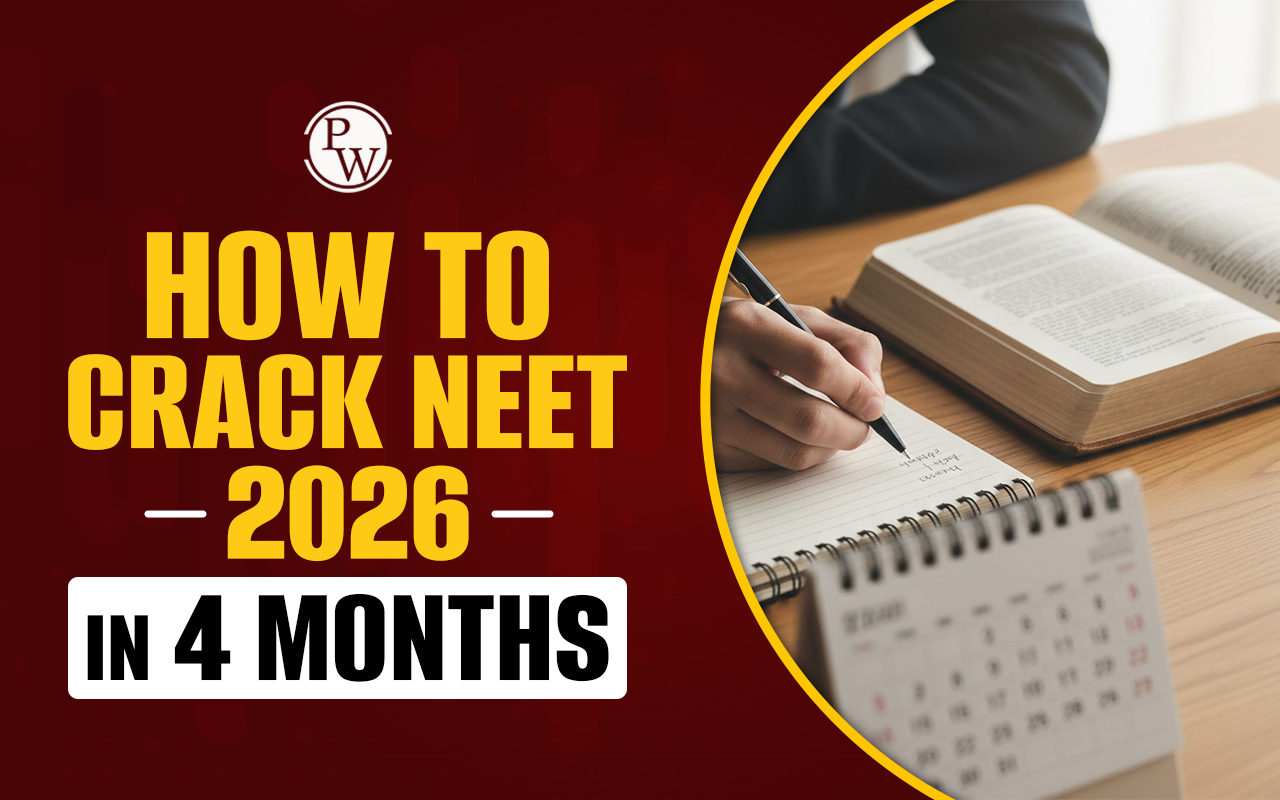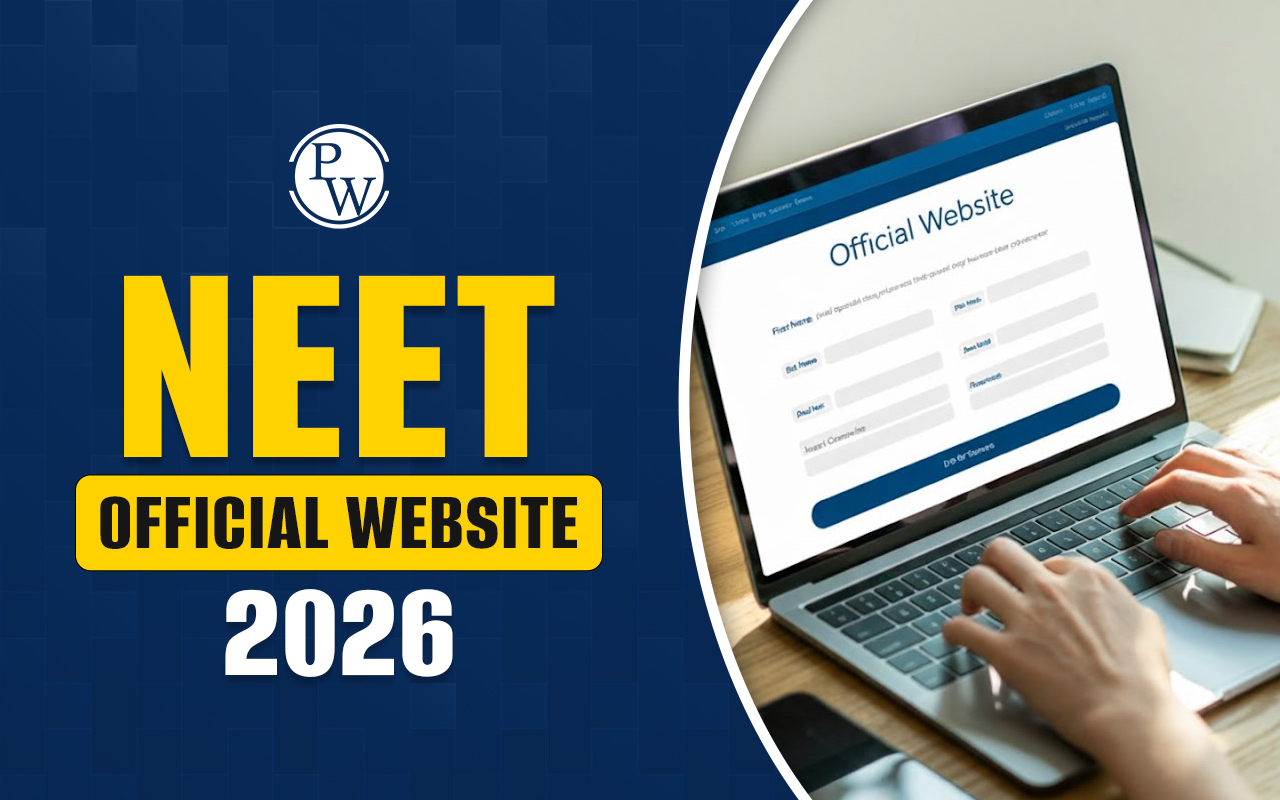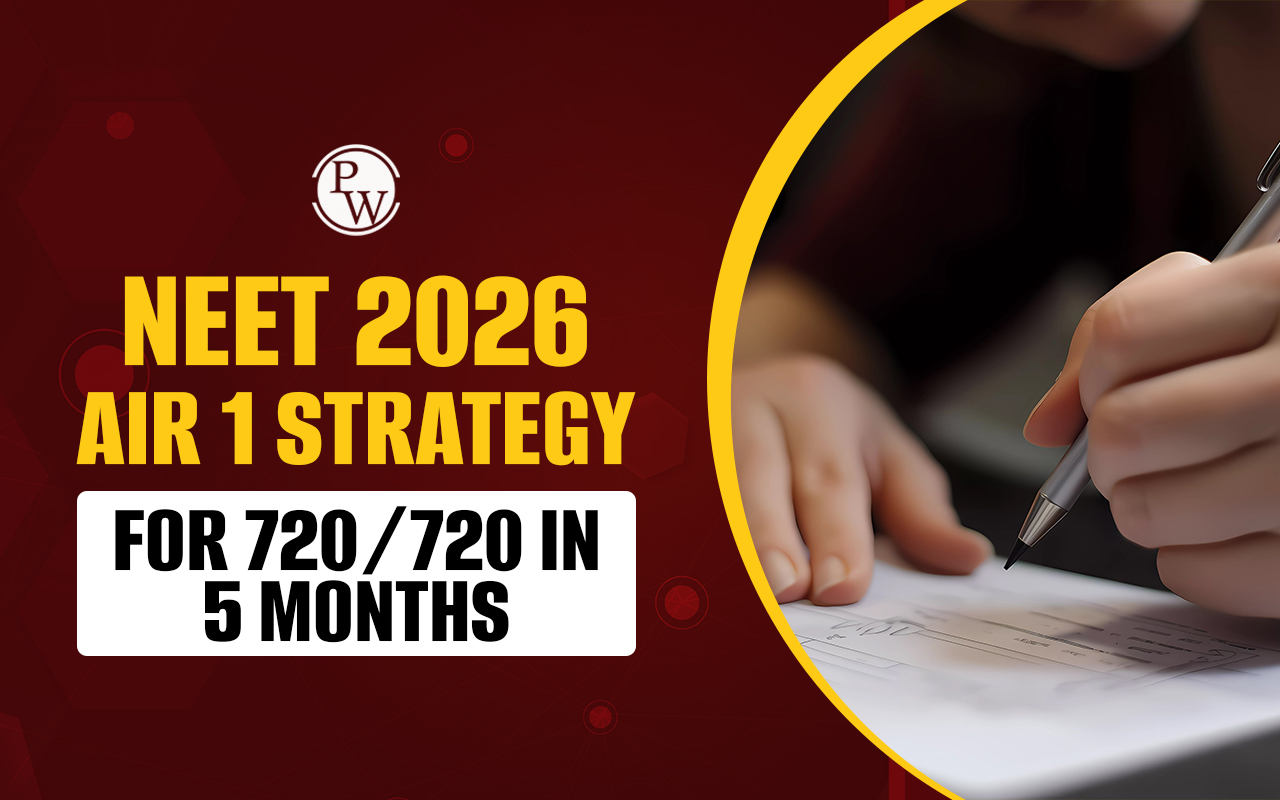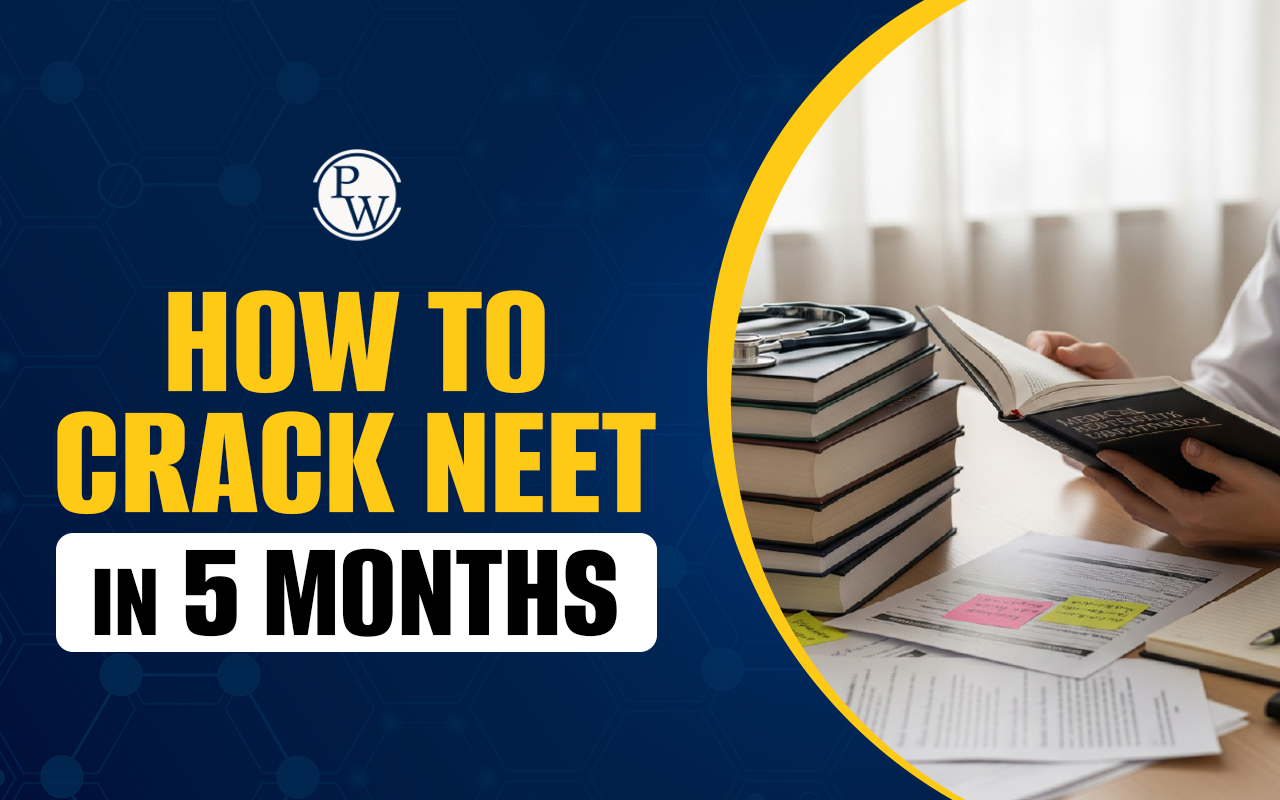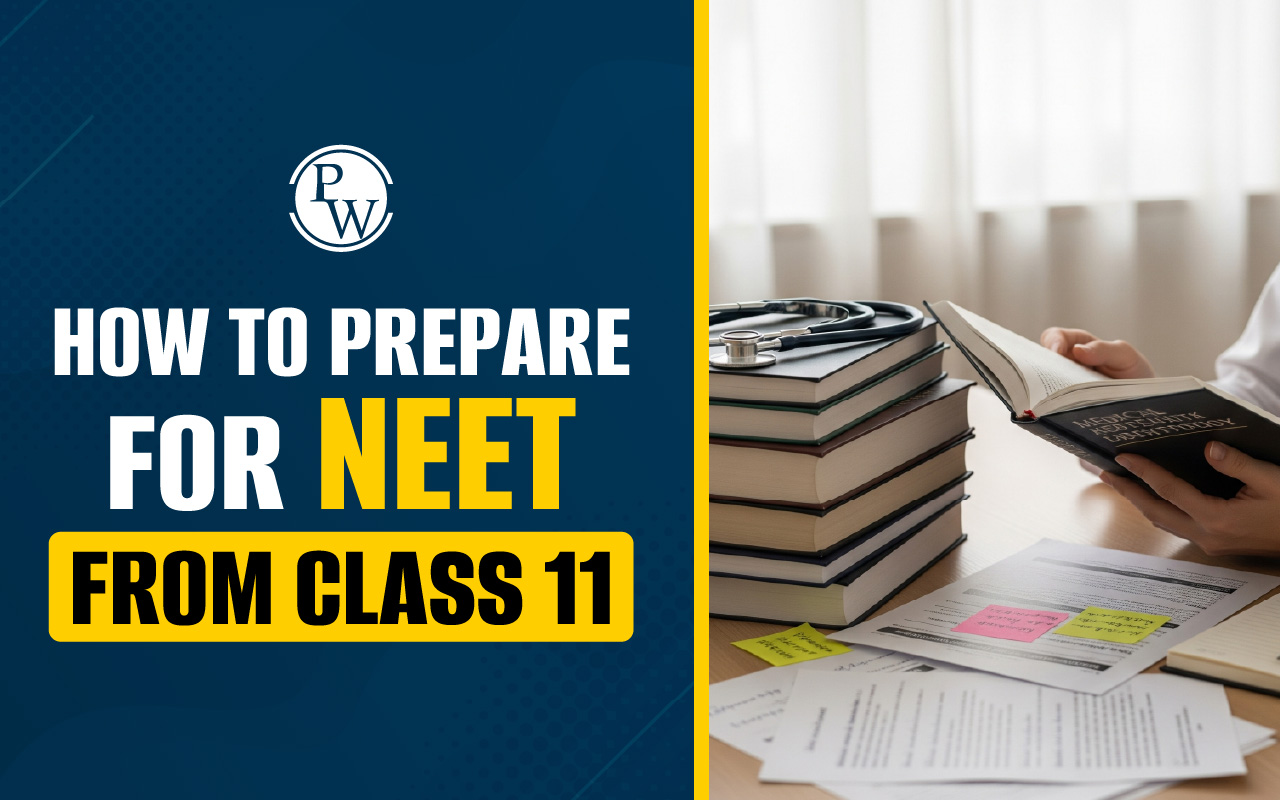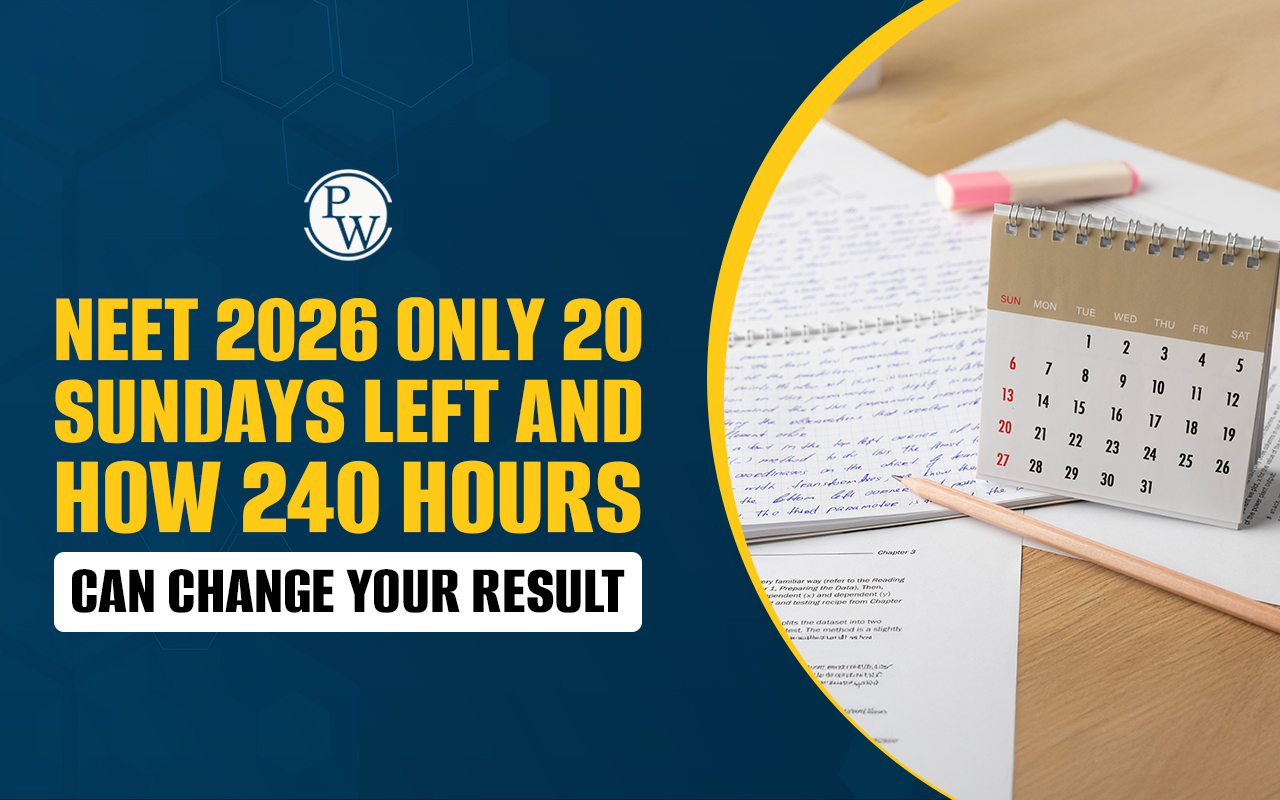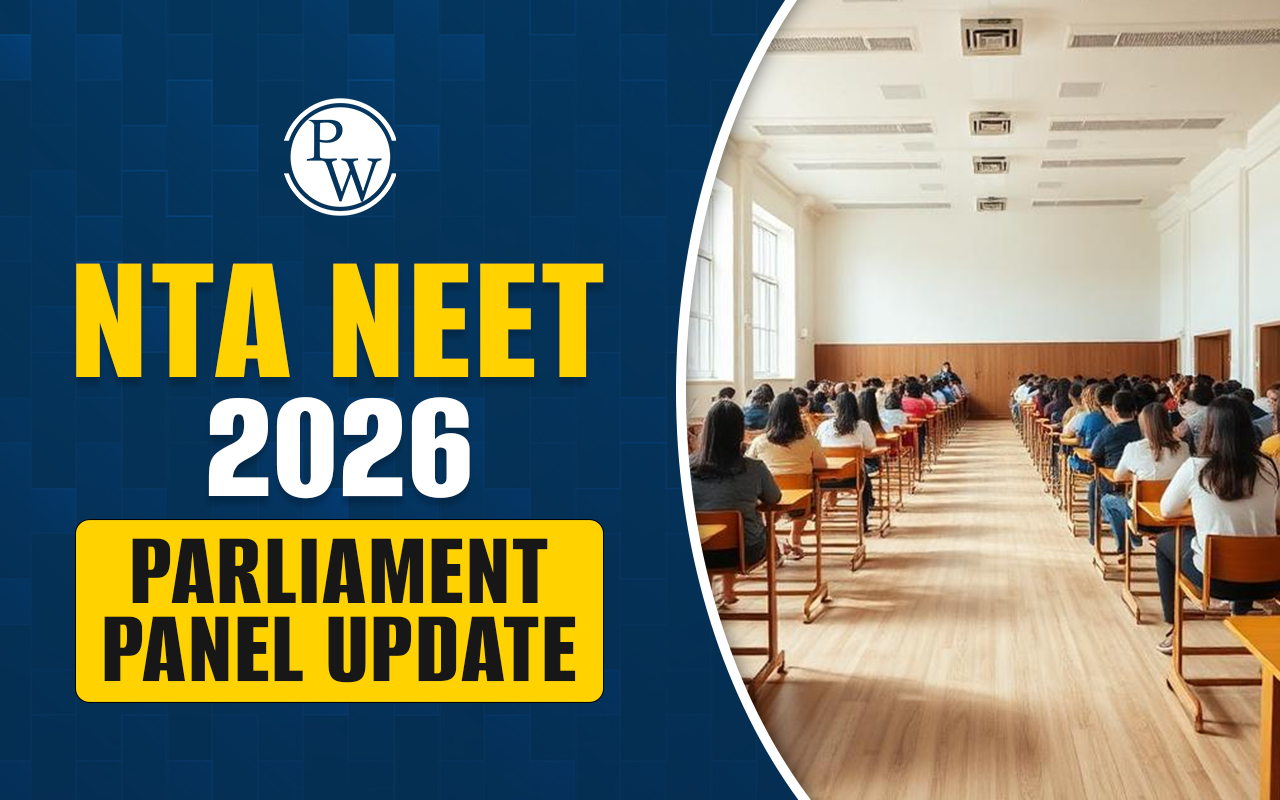
Ray Optics and Optical Instruments MCQs: For Class 12 students, Chapter 9 on Ray Optics and Optical Instruments is essential for NEET. Practicing MCQs from this chapter helps assess students' understanding and application of these concepts. To excel, students should focus on mastering core principles, practicing regularly, and using online tests to simulate real exam conditions. Regular practice and strategic preparation are essential for effectively handling similar questions in actual exams. Students preparing for the NEET exam can access Ray Optics MCQs here to boost their preparation.
Ray Optics and Optical Instruments MCQs for NEET
For Class 12 students, chapter 9 on Ray Optics and Optical Instruments is important for both board exams and entrance tests like NEET. It covers key concepts about how light interacts with various materials and how optical devices use these principles. MCQs from this chapter test students' ability to apply theoretical knowledge to practical situations, indicating their readiness for advanced exams. Careful preparation and practice of Ray Optics MCQs help students handle similar questions effectively during their exams.Also Check:
Ray Optics and Optical Instruments Class 12 MCQs
Students must check the NEET Physics chapter-wise weightage for Ray Optics and Optical Instruments. Practicing MCQs for this chapter involves understanding key concepts, regular practice, and strategic problem-solving. Using resources such as online tests and detailed answer explanations can further enhance your performance and confidence in tackling these questions.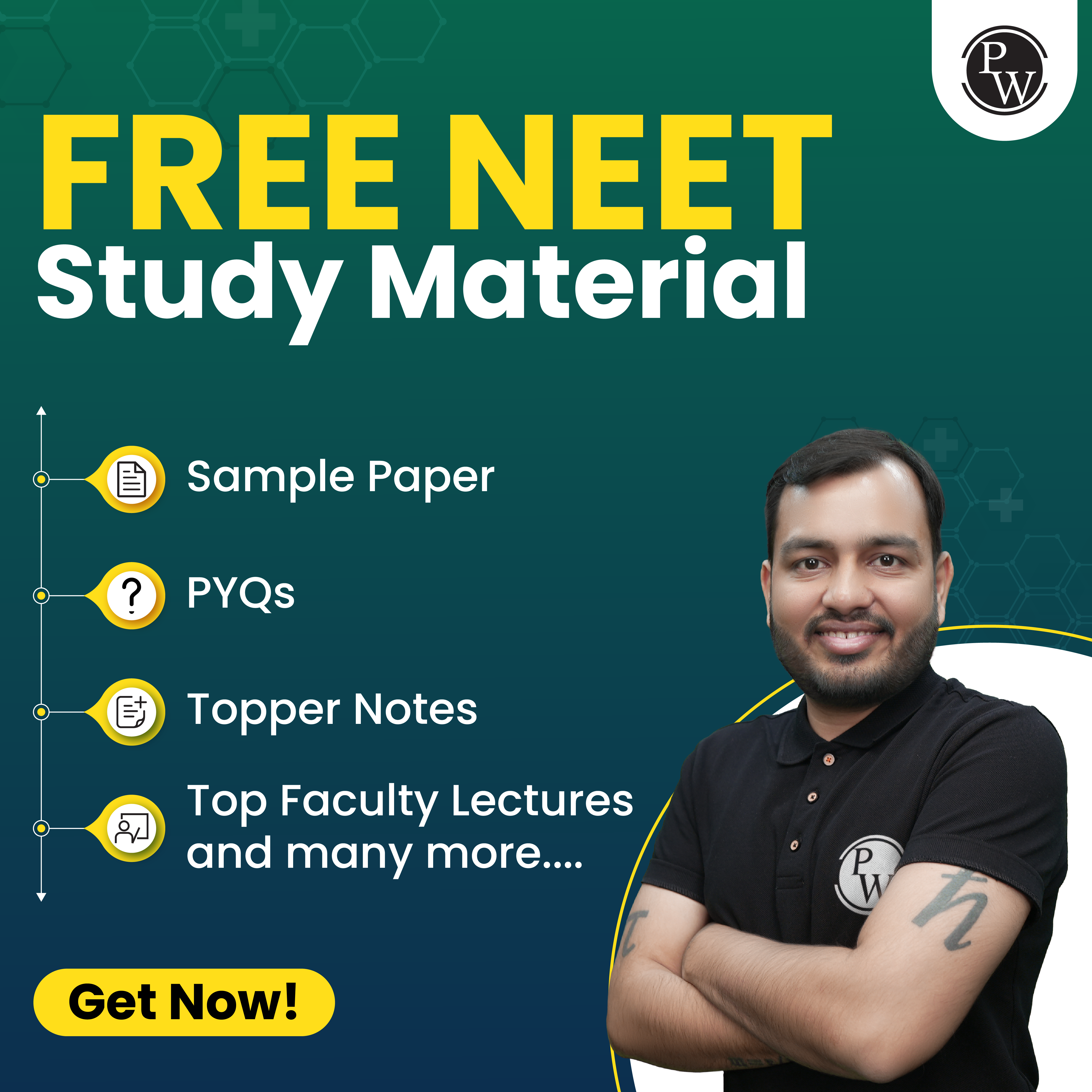
Ray Optics Class 12 MCQs with Answers
Practicing Ray Optics MCQs with answers is an effective strategy for mastering Class 12 concepts. By working through Ray Optics MCQs and examining their answers, you can learn useful problem-solving techniques, identify areas where you may need more practice, and enhance your overall exam performance. Ray Optics and Optical Instruments MCQs provided with each answer clarify difficult concepts, making it easier to grasp the fundamental principles of ray optics. This approach not only reinforces your knowledge but also prepares you for tackling similar questions on your NEET exam.| NEET Physics MCQs | |
|---|---|
| Units and Measurements MCQs | Motion in a plane MCQs |
| Mathematics Tools MCQs | Newton’s laws of motion MCQs |
| Motion in a straight line MCQs | Gravitation MCQs |
Q 1. A ray of light falls on a mirror normally. The values of the angle of incidence and angle of reflection respectively are;
(1) 0°,0° (2) 90°, 0° (3) 0°, 90° (4) 90°, 90°Ans. 1
Q 2. A ray of light is reflected at an angle of 15°. If the angle of incidence is doubled, then the angle of reflection will be;
(1) 90° (2) 60° (3) 30° (4) 15°Ans. 3
Q 3. A plane mirror makes an angle of 30° with the horizontal. If a vertical ray strikes the mirror, find the angle between the mirror and the reflected ray.
(1) 40° (2) 45° (3) 80° (4) 60°Ans. 4
Q 4. A convergent beam of light is incident on a plane mirror as shown in the figure. What is the nature of the image formed after Reflection?
(1) Real (2) Virtual (3) Both Real & Virtual (4) None of theseAns. 1
Q 5. Find the nature of the image in the given figure.
 (1) Real
(2) Virtual
(3) Both Real & Virtual
(4) None of these
(1) Real
(2) Virtual
(3) Both Real & Virtual
(4) None of these
Ans. 2
Q 6. Select the WRONG statement in the case of the image formed by a plane mirror.
 (1) The image is as far behind the mirror as the object is in front of it.
(2) The image is erect and virtual.
(3) The size of the image is the same as that of the size of the object.
(4) Since the image formed is behind the mirror it can be taken on the screen.
(1) The image is as far behind the mirror as the object is in front of it.
(2) The image is erect and virtual.
(3) The size of the image is the same as that of the size of the object.
(4) Since the image formed is behind the mirror it can be taken on the screen.
Ans. 4
Q 7. The image of a real object formed by a plane mirror is;
(1) Erect, real, and of equal size. (2) Erect, virtual, and of equal size. (3) Inverted, real and of equal size. (4) Inverted, virtual, and of equal size.Ans. 2
Q 8. Two plane mirrors A and B are placed parallel to each other and spaced 20 cm apart. An object is kept in between them 15 cm from A. Out of the following at which point is an image not formed in mirror A.
(1) 15 cm (2) 25 cm (3) 45 cm (4) 55 cmAns. 3
Also Check:
Q 9. If an object is placed symmetrically between two plane mirrors, inclined at an angle of 72°, then the total number of images formed is;
(1) 5 (2) 4 (3) 2 (4) InfiniteAns. 2
Q 10. Two mirrors are kept inclined to each other at an angle of 60° and an object is placed between them. The total number of images formed is ______.
(1) six (2) five (3) four (4) threeAns. 2
Q 11. If two plane mirrors are parallel to each other, the object lying between them will have (n) number of images given by;
(1) n = 0 (2) n = 1 (3) n = 3 (4) n = ∞Ans. 4
Q 12. To get three images of a single object, one should have two plane mirrors at an angle of;
(1) 60° (2) 90° (3) 120° (4) 30°Ans. 2
Q 13. Two plane mirrors are lying perpendicular to each other, there is a lamp in between the mirrors. Then No. of images of the lamp will be;
(1) 3 (2) 4 (3) 5 (4) 6Ans. 1
Q 14. A ray is an incident at a 30° angle of incidence on the plane mirror. What will be the deviation after reflection from the mirror;
(1) 120° (2) 60° (3) 30° (4) 45°Ans. 1
Q 15. The angle of incidence of a ray falling on a plane mirror is 45°. The deviation produced by the plane mirror is;
(1) 45° (2) 90° (3) 120° (4) 180°Ans. 2
Q 16. A point source of light B is placed at a distance L in front of the center of a mirror of width d hung vertically on a wall. A man walks in front of the mirror along a line parallel to the mirror at a distance of 2L from it as shown. The greatest distance over which he can see the image of the light source in the mirror is;
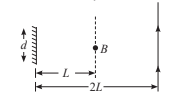 (1) 2d
(2) d
(3) 2d
(4) 3d
(1) 2d
(2) d
(3) 2d
(4) 3d
Ans. 4
Q 17. A boy of height 1.5 m with his eye level at 1.4 m stands before a plane mirror of length 0.75 m fixed on the wall. The height of the lower edge of the mirror above the floor is 0.8 m. Then;
(1) The boy will see his full image (2) The boy cannot see his hair (3) The boy cannot see his feet (4) The boy cannot see either his hair or his feet.Ans. 3
Q 18. A tall man of height 6 feet, wants to see his full image. The required minimum length of the mirror will be;
(1) 12 feet (2) 3 feet (3) 6 feet (4) Any lengthAns. 2
Q 19. A boy 1.50 m tall with his eye level at 1.38 m from the ground stands before a mirror fixed on a wall. What should be the minimum length of the mirror so that he can view himself fully?
(1) 0.8 m (2) 0.75 m (3) 0.69 m (4) none of theseAns. 2
Q 20. A man is 180 cm tall and his eyes are 10 cm below the top of his head. In order to see his entire height right from toe to head, he uses a plane mirror kept at a distance of 1 m from him. Find out the minimum length of the plane mirror required and the position of a plane mirror;
(1) Minimum length of mirror = 90 cm and position = 85 cm above ground. (2) Minimum length of mirror = 85 cm and position = 90 cm above ground. (3) Minimum length of mirror = 90 cm and position = 90 cm above ground. (4) Minimum length of mirror = 85 cm and position = 85 cm above ground.Ans. 1
Q 21. In the below figure, how much should be mirror rotated so that light retraces its path?
 (1) 20° anticlockwise
(2) 40° anticlockwise
(3) 10° clockwise
(4) 20° clockwise
(1) 20° anticlockwise
(2) 40° anticlockwise
(3) 10° clockwise
(4) 20° clockwise
Ans. 1
Q 22. In the figure if mirror is rotated clockwise by 20° and the incident ray is rotated 10° anticlockwise. By how much angle reflected ray gets rotated.
 (1) 50° anticlockwise
(2) 30° clockwise
(3) 30° anticlockwise
(4) 50° clockwise
(1) 50° anticlockwise
(2) 30° clockwise
(3) 30° anticlockwise
(4) 50° clockwise
Ans. 4
Q 23. An unnumbered wall clock shows time 04: 25: 37, where 1st term represents hours, 2nd represents minutes and the last term represents seconds. What time will its image in a plane mirror show?
(1) 08 : 35: 23 (2) 07: 35: 23 (3) 07 : 34: 23 (4) None of theseAns. 3
Q 24. If a wall clock is placed in front of a plane mirror and shows a time 4:30:30. Then what will be the time its image is showing;
(1) 7 : 29: 30 (2) 6 : 29: 30 (3) 7 : 30: 30 (4) 8 : 29: 30Ans. 1
Q 25. A man runs towards a stationary plane mirror at a speed of 15 m/s. What is the speed of his image with respect to the mirror;
(1) 7.5 m/s (2) 15 m/s (3) 30 m/s (4) 45 m/sAns. 2
Q 26. An object is placed at a distance of 20 cm from the pole of a concave mirror of a focal length of 10 cm. The distance of the image formed is;
(1) +20 cm (2) +10 cm (3) –20 cm (4) –10 cmAns. 3
Q 27. An object 5 cm tall is placed 1 m from a concave spherical mirror which has a radius of curvature of 20 cm. The size of the image is;
(1) 0.11 cm (2) 0.5 cm (3) 0.55 cm (4) 0.60 cmAns. 3
Q 28. An object is placed at a distance of 40 cm in front of a concave mirror of a focal length of 20 cm. The image produced is;
(1) Real inverted and smaller in size (2) Real, inverted, and of the same size (3) Real and erect (4) Virtual and invertedAns. 2
Q 29. A virtual image three times the size of the object is obtained with a concave mirror with a radius of curvature of 36 cm. The distance of the object from the mirror is
(1) 5 cm (2) 12 cm (3) 10 cm (4) 20 cmAns. 2
Q 30. A 2.0 cm tall object is placed 15 cm in front of a concave mirror of a focal length of 10 cm. What is the size and nature of the image?
(1) 4 cm, real (2) 4 cm, virtual (3) 1.0 cm, real (4) none of theseAns. 1
Q 31. An object placed in front of a concave mirror at a distance of x cm from the pole gives a 3 times magnified real image. If it is moved to a distance of (x + 5)cm, the magnification of the image becomes 2. The focal length of the mirror is;
(1) 15 cm (2) 20 cm (3) 25 cm (4) 30 cmAns. 4
Q 32. A rod of length 10 cm lies along the principal axis of a concave mirror of focal length 10 cm in such a way that its end closer to the pole is 20 cm away from the mirror. The length of the image is;
(1) 10 cm (2) 15 cm (3) 2.5 cm (4) 5 cmAns. 4
Q 33. A short straight object of height 100 cm lies before the central axis of a spherical mirror whose focal length has absolute value | f | = 40 cm. The image of an object produced by the mirror is of height 25 cm and has the same orientation as the object. One may conclude from the information;
(1) The image is virtual, opposite side of a convex mirror (2) The image is virtual, opposite side of the concave mirror (3) The image is the real, same side of the convex mirror (4) The image is real, same side of a concave mirrorAns. 1
Q 34. When the object is kept between the pole and the focus of a concave mirror, in front of it, the image formed will be;
(1) Virtual, diminished, behind the mirror. (2) Real, diminished, Infront of the mirror. (3) Virtual, enlarged, behind the mirror. (4) Real, enlarged, in front of the mirror.Ans. 3
Q 35. An object is placed at a distance equal to the focal length of a convex mirror. If the focal length of the mirror is f, then the distance of the image from the pole of the mirror is;
(1) Less than f (2) Equal to f (3) More than f (4) InfiniteAns. 1
Q 36. Which of the following statements is incorrect?
(1) The magnification produced by a convex mirror is always less than one. (2) A virtual, erect, same-sized image can be obtained using a plane mirror. (3) A virtual, erect, magnified image can be formed using a concave mirror. (4) A real, inverted, same-sized image can be formed using a convex mirror.Ans. 4
Q 37. An object is placed at a distance of 20 cm from the pole of a concave mirror of a focal length of 10 cm. The distance of the image formed is;
(1) +20 cm (2) +10 cm (3) –20 cm (4) –10 cmAns. 3
Q 38. An object is placed in front of a concave mirror with a radius of curvature 40 cm at a distance of 10 cm. The position, nature, and magnification of the image are;
(1) At 20 cm, behind the mirror, real, inverted, and m = 2 (2) At 20 cm, behind the mirror, virtual, erect, and m = –2 (3) At 20 cm, behind the mirror, virtual, erect, and m = 2 (4) At 20 cm, behind the mirror, real, inverted, and m = –2Ans. 3
Q 39. An object is placed at a distance of 40 cm from a concave mirror of a focal length of 15 cm. If the object is displaced through a distance of 20 cm toward the mirror, the displacement of the image will be;
(1) 30 cm towards the mirror (2) 36 cm away from the mirror (3) 30 cm away from the mirror (4) 36 cm towards the mirrorAns. 2
Q 40. A point object is placed at a distance of 10 cm and its real image is formed at a distance of 20 cm from a concave mirror. If the object is moved by 0.1 cm towards the mirror, the image will shift by about.
(1) 0.4 cm away from the mirror (2) 0.4 cm towards the mirror (3) 0.8 cm away from the mirror (4) 0.8 cm towards the mirrorAns. 1
Q 41. A point object is placed at a distance of 15 cm from a concave mirror of a focal length of 10 cm. If the object is moved with 1 m/s towards the mirror, the image will move with the speed of;'
(1) 4 m/s away from the mirror (2) 4 m/s towards the mirror (3) 8 m/s away from the mirror (4) 8 m/s towards the mirrorAns. 1
Q 42. A point object moving on a principle axis of a concave mirror of focal length 24 cm towards the mirror. When it is at a distance of 60 cm from the mirror, its velocity is 9 cm/s. What is the velocity of the image at that instant?
(1) 5 cm/s towards the mirror. (2) 12 cm/s away from the mirror. (3) 4 cm/s towards the mirror. (4) 9 cm/s away from the mirror.Ans. 3
Q 43. An object is present on the principal axis of a concave mirror at a distance of 30 cm from it, a focal length of the mirror is 20 cm. If the object starts moving with 2 cm/s along the principal axis towards the mirror then.
(1) 4 cm/s image moves away from mirror. (2) 4 cm/s image moving towards mirror. (3) The image starts moving at 6 cm/s towards the mirror. (4) 8 cm/s away from the mirror.Ans. 4
How to Solve Ray Optics and Optical Instruments MCQs?
To excel in Ray Optics and Optical Instruments MCQs, follow these steps:- Understand Core Concepts: Make sure you have a strong grasp of the basic principles of ray optics, such as reflection, refraction, and the functioning of optical devices.
- Analyze Each Question: Carefully read each question to fully understand what it is asking. Pay attention to specific details that might affect the answer.
- Practice Regularly: Practice consistently to improve your problem-solving skills and speed. Work on a variety of questions to cover different types of problems.
- Review Mistakes: After practicing, review any incorrect answers to understand what went wrong and learn the correct methods.
Q. What are Ray Optics MCQs Questions Class 12?
Q. Why should I practice MCQs on Ray Optics?
Q. How are Ray Optics MCQs for NEET different from Class 12 MCQs?
Q. How can Ray Optics MCQs Tests aid in my exam preparation?
Q. What benefits do Ray Optics MCQs with Answers offer?


